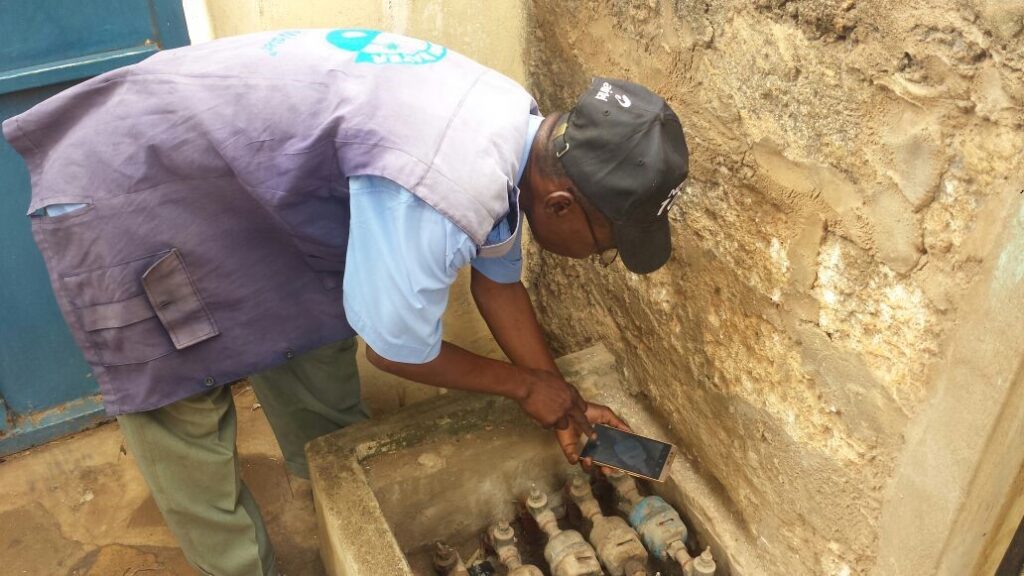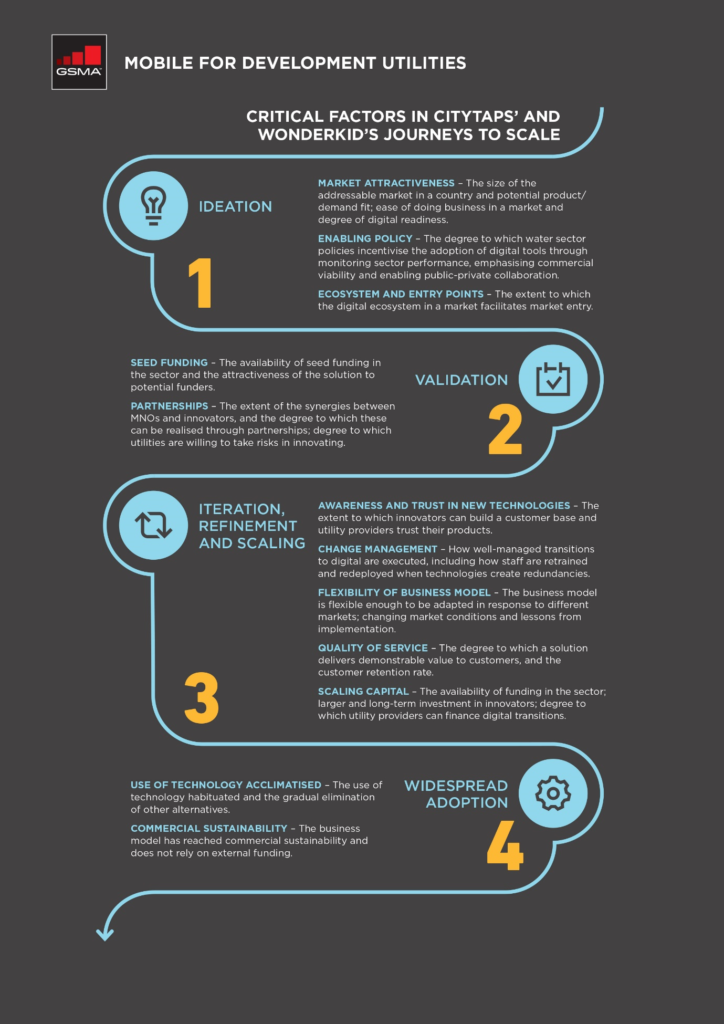Scaling digital water solutions in developing countries

By Catarina Morais & Zach White of GSMA
In Sub-Saharan Africa there are more unique mobile subscribers (477 million) than there are people with access to safely managed water services (275 million). The expansion of mobile connectivity in low- and middle-income countries has created huge opportunities for digital innovation. New technologies not only enable existing systems to operate more efficiently, but also make new service delivery models possible.
To better understand how digital innovators can scale in the water sector, we examined the scaling journey of two business-to-business (B2B) service providers. Wonderkid provides bespoke software solutions to 40 water utilities in Kenya and other African markets. CityTaps provides pay-as-you-go (PAYG) digital metering solutions to water utilities across African and Central American markets.
Innovator and utility journeys in scaling digital solutions
The process by which a utility scales digital technology is fundamentally different to an innovator/ digital solutions provider. Innovators experience scaling through the growth and development of their business and the evolution of the products and services they offer. Digital solutions providers will be partners to utilities throughout their digitalisation journey, providing different products and services that are relevant at different stages. Understanding these different experiences is important, as accelerating digital adoption requires the market for these solutions to match the capacity of utility providers to adopt solutions. Please see Figure 2 of the Scaling Digital Solutions in the Water Sector report (page 12 of 17) to view the innovator and utility journeys in scaling digital solutions.
The scaling journey – critical factors
Based on the experiences of Wonderkid and CityTaps, in our report we identified some critical considerations for innovators at different stages, from ideation to validation, iteration, refinement, scaling and widespread adoption. While most factors are relevant throughout the entire journey, their pertinence does change at different stages.

Fundamental throughout the entire scaling journey are two key areas: financing and the adoption of digital tools by utility staff and their consumers.
The estimated cost of achieving universal access to water and sanitation by 2030 is $114 billion per year. Realising this not only requires more public investment and donor support, but also more commercial and blended finance. Innovators working with digital solutions are particularly well placed to benefit from financing solutions that require accurate tracking of outcomes, particularly results-based financing. However, this is best suited to models that have been validated, and grant funding remains important in supporting emerging innovations.
B2B providers in the water sector often find revenue collection from utility clients challenging. Innovators must be aware of the financial constraints faced by utilities in low- and middle-income countries, and structure their product offerings to account for these. Providing flexible payment models, such as leasing, can enable adoption by lowering upfront costs.
For B2B solutions, the commitment of utility leadership to drive digitalisation will be a key determinant of the pace of adoption. Innovators most focus on supporting change management processes within utilities and building trust among end-users. In turn, utilities can support adoption by creating a culture of leadership and innovation that embraces new technologies.
The willingness to adopt digital technology among utilities is often influenced by the level of accountability imposed by governments. Where governments set and enforce specific performance targets for utilities, utilities will seek digital tools to achieve efficiencies and provide evidence of achievement. While benchmarking utilities at a national level can be beneficial, it is paramount that regulators specify targets that benefit low-income customers. Digital tools can play a key role in the deployment of services for vulnerable people, as a rise in efficiency can lead to an increase in coverage.
It’s clear that digital solutions can yield significant improvements to water services. Yet scaling these depends on partnerships between innovators, mobile operators and utilities, and support from funders. Mobile operators are well established stakeholders, particularly in low- and middle-income countries, and they offer connectivity and payment options that underpin a range of digital tools. By partnering with mobile operators, innovators can leverage these mobile services, and benefit from their strong brand recognition, and existing customer relationships.
If you would like more information, please read our full report for more insights on the topic, and get in touch with us at m4dutilities@gsma.com.
The GSMA Mobile for Development (M4D) Utilities programme is funded by the UK Foreign, Commonwealth & Development Office (FCDO), and supported by the GSMA and its members.
Source : IWA

